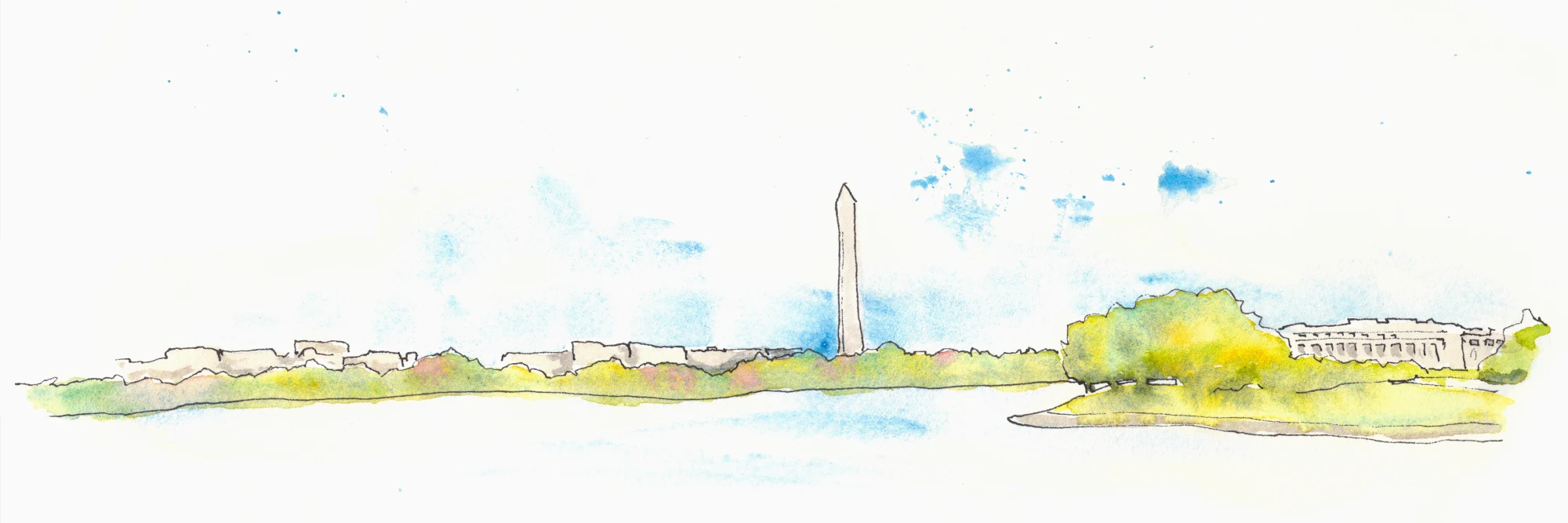How to Build a Drop Down Menu with Modern CSS
We live in a golden age for CSS development. Recent advancements in the language, which are supported by all major browsers, let us build interfaces that used to require a lot of javascript.
Take drop down menus. They're everywhere, and have been for decades. While basic drop downs have been acheivable using CSS alone for a long time (Bootstrap had a good implementation), advanced functionality has always required scripting.
I'm going to lean heavily on the :has selector and the new powers that it gives us as UI authors. I hope this article gives you some ideas of what you can do with it, and you come up with your own creative uses for it.
Syntax
For this article I'm going to use scss syntax - I write Sass every day, and it's how I think. I've not tried this with native CSS nesting, but I imagine it's not all that different.
Basic Dropdown with Modern CSS
First, the markup
Let's say we're buildng the navigation for a site, and it only has one item. It's a link to an "About" page. I'm going to use an unordered list inside a <nav> so that other nav items could be added later. Let's add some classes to make this easier to style.
<nav>
<ul>
<li class="menu-wrapper">
<a href="/about" class="menu-trigger">About</a>
<div class="menu">
<a href="/about/blog">Blog</a>
</div>
</li>
</ul>
</nav>The whole implementation relies on a an outer selector, menu-wrapper containing both the menu trigger, menu-trigger and the menu itself, menu.
Making this work with modern CSS.
First let's make the <ul> horizontal and make the menu absolutely positioned so that it's taken out of the document flow. Let's also display: none it by default, as it won't be accessible to users on touch devices. We'll use inset to set it's positioning. We'll also need a transition for when we trigger the drop down.
nav ul {
display: flex;
}
.menu-wrapper {
position: relative;
}
.menu {
position: absolute;
display: none;
inset: 100% auto auto 0;
transition: opacity 0.3s ease-in;
}Right now the menu will appear to just be a link that any user on any device can click.
Adding drop down behavior for mouse devices
We need to do is enable these functions when the user is on a mouse device. We'll use the hover media query to do that1. We need to set it to display: block so that we can animate the menu later. But we will also change the opacity to 0 so it's still visually hidden.
.menu {
position: absolute;
display: none;
inset: 100% auto auto 0;
transition: opacity 0.3s ease-in;
@media (hover: hover) {
display: block;
opacity: 0;
}
}Now, we'll use modern CSS selectors - specifically :has - to trigger the drop down.
// on mouse devices
@media (hover: hover) {
// if the outer wrapper
.menu-wrapper {
// contains a trigger that is hovered
&:has(.menu-trigger:hover) {
// then set the opacity of the menu to 1
.menu {
opacity: 1;
}
}
}
}This will trigger the menu - tada! We have a basic drop down.
You will notice it opens, but you can't get into it. We need to do a few more things to it to make it function the way would one expect. Specifically we need to add the menu itself to the list of has triggers so that it stays open while the user is hovering over it. We also need to addpointer-events: none while it's hidden so that hovering over it's physical location doesn't trigger weird behavior.
... .menu {
position: absolute;
display: none;
inset: 100% 0 0 0;
transition: opacity 0.3s ease-in;
pointer-events: none; // avoids weird triggering
@media (hover: hover) {
display: block;
opacity: 0;
}
}
@media (hover: hover) {
.menu-wrapper {
&:has(.menu-trigger:hover),
&:has(.menu:hover) {
// this selector keeps the menu open
.menu {
opacity: 1;
pointer-events: auto; // allows user to interact with the menu
}
}
}
}Much better!
Improving the experience for keyboard users
Now, let's make it even better for keyboard users who still have a mouse. We want the menu to be visibile if the trigger is in focus, or if anything inside the menu itself is in focus.
@media (hover: hover) {
.menu-wrapper {
&:has(.menu-trigger:hover),
&:has(.menu-trigger:focus-visible), // if the trigger is in focus
&:has(.menu:hover),
&:has(.menu:focus-within) {
// of if some item inside the menu is in focus
.menu {
opacity: 1;
pointer-events: auto;
}
}
}
}Here is the result (with some colors thrown in):
See the Pen Drop Down with Modern CSS by Chip Cullen (@chipcullen) on CodePen.
Even more advanced usage
Let's say you have a search menu like so:
<nav>
<ul>
<li class="menu-wrapper">
<a href="/about" class="menu-trigger">About</a>
<div class="menu">
<a href="/about/blog">Blog</a>
</div>
</li>
<li class="menu-wrapper">
<a href="/search" class="menu-trigger">Search</a>
<div class="menu">
<form name="q" action="/search">
<input type="search" placeholder="Search" aria-label="Search">
<button role="submit">Go!</button>
</div>
</li>
<ul>
<nav>And you have the following requirements:
- that if the user has clicked into the search input, the menu should stay visible.
- If the user has entered any text (and not yet hit Go), the menu should stay visible
The first one is already addressed by this selector 😎:
&:has(.menu:focus-within);The second requirement is actually super easy by adding this selector:
&:has(input:not(:placeholder-shown));Which is true if the placeholder isn't show - which happens when the user enters text.
So the finished chunk of code looks like this:
@media (hover: hover) {
.menu-wrapper {
&:has(.menu-trigger:hover),
&:has(.menu-trigger:focus-visible), // if the trigger is in focus
&:has(.menu:hover),
&:has(.menu:focus-within),
&:has(input:not(:placeholder-shown)), { // if an input has text
.menu {
opacity: 1;
pointer-events: auto;
}
}
}
}Bringing it all together
Let's bring this all together then, and DRY out our code a bit with the :is selector:
nav ul {
display: flex;
}
.menu-wrapper {
position: relative;
}
.menu {
position: absolute;
display: none;
inset: 100% auto auto 0;
transition: opacity 0.3s ease-in;
pointer-events: none;
@media (hover: hover) {
display: block;
opacity: 0;
}
}
@media (hover: hover) {
.menu-wrapper {
&:has(
:is(
.menu-trigger:hover,
.menu-trigger:focus-visible,
.menu:hover,
.menu:focus-within,
input:not(:placeholder-shown)
)
) {
.menu {
opacity: 1;
pointer-events: auto;
}
}
}
}Which results in:
See the Pen Dropdown menu with 2024 CSS by Chip Cullen (@chipcullen) on CodePen.
You could further DRY it out with some more clever nesting with the initial .menu selector, but I think it hurts readability at that point.
Conclusion
I hope this article gives you some ideas on how Modern CSS lets us accomplish things that used to require a lot of finicky scripting. With a little creative thinking, it's amazing what you can build with the tools we now have!
1 I know that it's not necessarily that simple to use the hover:hover media query, but I'm not trying to focus on that with this post. In my experience this usually covers most of my use cases. If you're worried about users on devices that don't work as expected with hover:hover, you may have to adjust the media query here.

